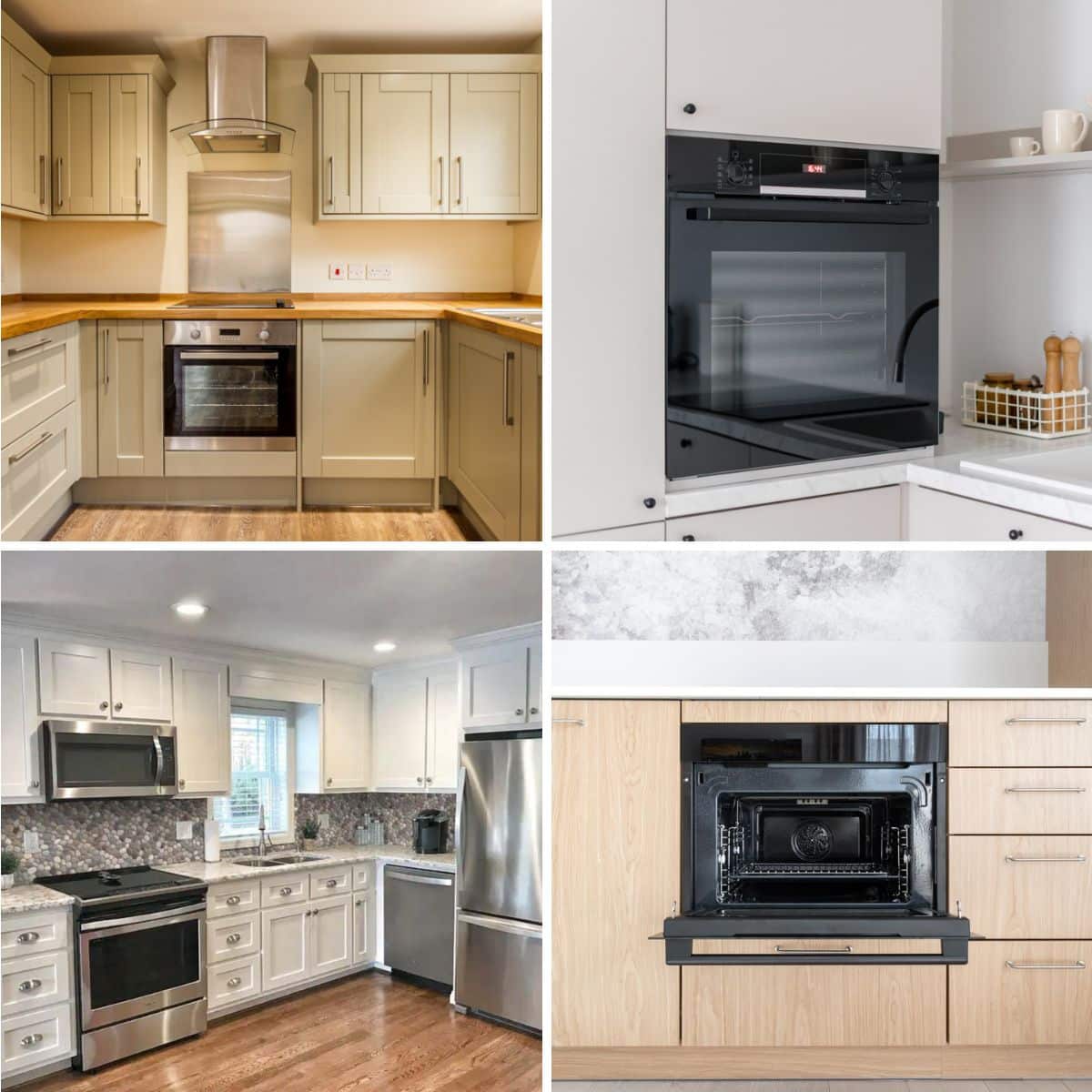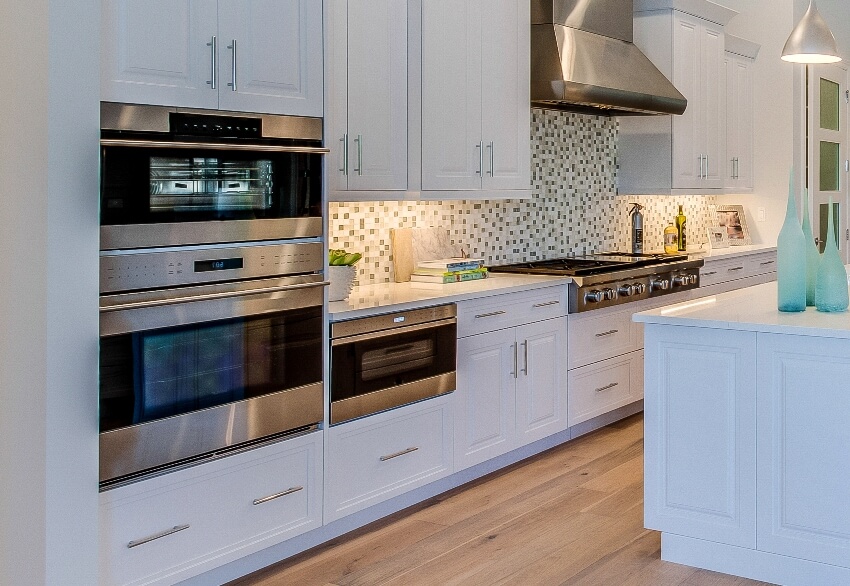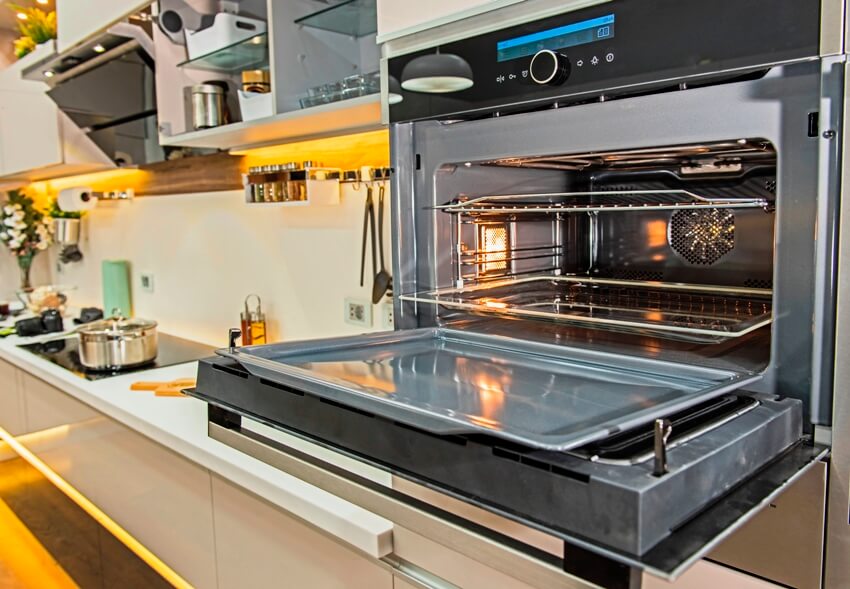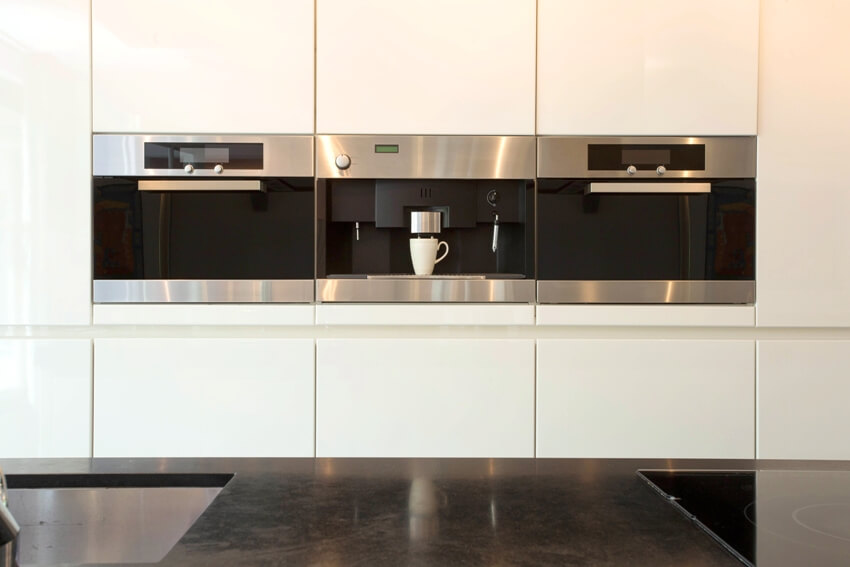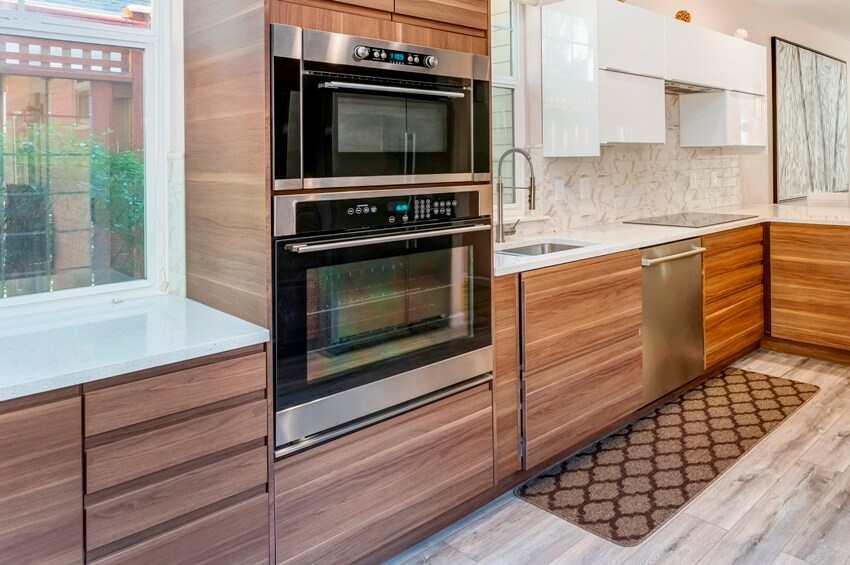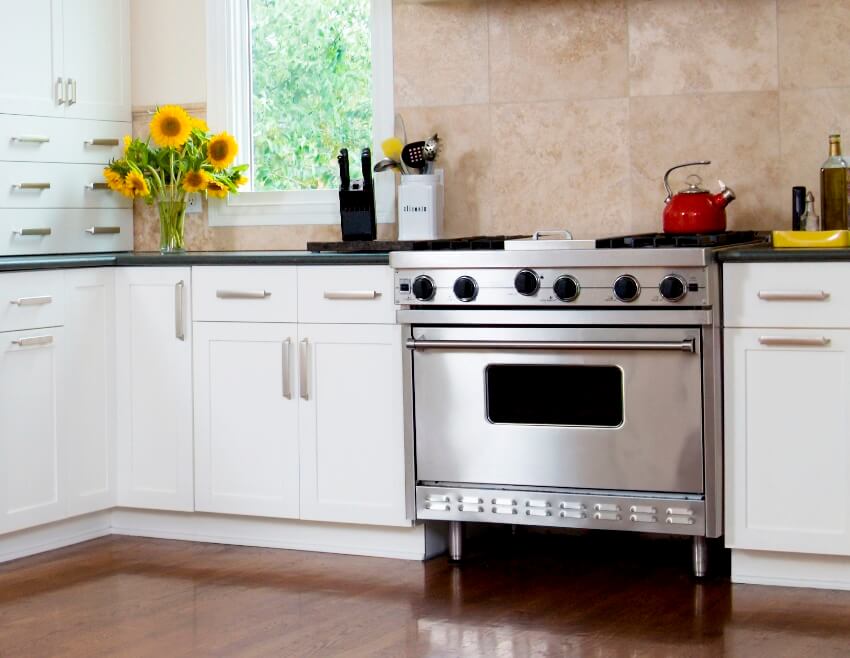Types Of Ovens (Ultimate Design & Buying Guide)
When you hear the word “oven,” one particular image immediately pops up. But the thing is, there is no one single type of oven. As a matter of fact, it’s quite the opposite. There are so many types and variations of ovens out there, and they have major differentiators. The types of ovens can vary depending on their features, heating methods, styles, sizes, and more. This can be overwhelming to a non-professional baker or oven user. If you’re a homeowner shopping around for your next oven investment, this list below can help educate you a little bit about it. To start off, these are the different types of ovens:
Conventional Oven
The conventional oven is one of the most common types of oven out there and have actually been around all the way back since the 50s. Even to this day, they are fairly commonplace in American households, even in the modern ones. They can come in different styles, designs, sizes, and can be either gas fired or electric.
This is a really solid option because it’s also pretty versatile. A conventional oven can be freestanding or standalone, it can be part of a kitchen range, or it can even come built in. There are plenty of options for you to choose from and that’s the reason why conventional ovens are so popular.
How conventional ovens work is that they usually start off by getting heated at the bottom, and then eventually, that accumulated heat rises all the way to the top. A gas flame is oftentimes what serves as a heat source for this particular type of oven. So in essence, the food is cooked from underneath the oven. There is also oftentimes a special allotment or space for broiling in some models and this allows you to fully utilize the space you need for the entire oven (top to bottom).
Conventional ovens allow your food to cook quickly and efficiently. It boasts excellent temperature control, which is why it is a steady favorite especially in professional kitchens. Its large compartments also allow large amounts of food to be cooked at any given time. Despite all of its merits though, conventional ovens do have certain chinks in their armor.
Because of its large size, conventional ovens are very prone to delivering fluctuating or inconsistent temperatures. This means that the heating they deliver is inconsistent and this may affect the cooking experience as well as food quality. They also produce more humidity (moisture in the hot air) which means it will take you a bit more time to properly crisp or brown your food.
Convection Oven
Convection ovens have risen steadily in terms of popularity over the years. They heat food up way faster and they do so more evenly than conventional ovens normally can. The overall result in the food produced is the lessened possibility of having “cool” and “hot” spots that is oftentimes the byproduct of uneven food heating.
Convection ovens are equipped with a fan as well as an exhaust system and the main purpose of this operation is that it creates and circulates the hot air generated, which facilitates consistent heating of the food. This more efficient hot air circulation makes it easier and faster to crisp and brown the food while guaranteeing that the insides of the food stay juicy. It’s so appealing because it’s versatile.
It comes in different types and styles. Convection ovens can be gas fired or can run on electricity. They can be standalone devices or can work alongside conventional ovens, toaster ovens, and even microwaves. In some models, turning on the convection feature can be an add-on feature which adds on to its ease of use value.
A lot of people have reservations about using convection ovens but this is mainly out of their unfamiliarity in the way that it operates. Conventional ovens have been around for far longer and more people are comfortable and are familiar with them.
Most of the most popular recipes are also created and written with the use of conventional oven in mind. The only downside to convection ovens is the fact that it has added moving parts such as the fan and the exhaust, which means that it may require more maintenance and repairs further down the line.
Steam Oven
Steam ovens are pretty straightforward. They are exactly what the sound like. Instead of using hot air (like what regular ovens use), they use hot steam to cook food instead. They reheat food more effectively and much faster than microwave or traditional ovens and have been known to be healthier as well. They can be added on to your existing ovens or stove tops, making them a great addition to your kitchen space.
How steam ovens work is that they siphon water from a water tank that’s been built into the device and they heat that up to very high temperatures, at times reaching 212 degrees Fahrenheit. Steam is then released into the rest of the oven’s space. It works like a convection cooker in a way where it circulates that hot or heated air (steam) to cook the food.
There are high end versions of the steam oven that connect directly to the water line of the home. This facilitates more convenience as it means that you wouldn’t have to keep refilling the built in water tank every now and then or every time you need to cook some food.
Most steam ovens are plug and play though and don’t really require any special contraptions to start cooking food. You simply fill it up with water, place the food, and then start cooking. Check our guide to steam ovens pros and cons here.
Toaster Oven

Toaster ovens are slightly smaller compared to microwave ovens. They are best used for grilling, toasting, roasting, or heating up small amounts of food at a time. One major upside to them is that they usually come in so much cheaper compared to the other types of ovens in the market.
They take little to no installation and using them is so basic and easy. They certainly don’t give the same quality of cooking and heating compared to their much larger cooker counterparts but if you aren’t really a professional chef and if the purpose is just for basic cooking needs in the home, the toaster oven should do just fine.
Microwave Oven
Microwave ovens are designed and built to heat food quickly, efficiently, and instantly. It relies on high frequency microwaves and cooks the food by way of electromagnetic radiation. Food can be heated up in a matter of seconds or just minutes.
It’s a compact and handy appliance and what’s so great about having it in the kitchen is that it doesn’t take up a lot of space. It can usually be placed just right on top of a countertop or a small special shelf or alcove. The use of microwave ovens is fairly limited though.
It is meant for simple reheating and for simple cooking only. It doesn’t caramelize, crisp, or brown the food. And although this can be a pro in some instances, this can be a major con in a lot of them. Find more about the types of microwaves here.
Dutch Oven

Dutch ovens are specialty devices. They are considered to be pricey yet wise investments you add on to your existing kitchen arsenal and more often than not, they offer the guarantee of lifetime use. In essence, a Dutch oven is a heavy duty type of cooking pot that comes with an equally heavy and thick lid.
Its main purpose is for browning food, simmering them on a stove top, or braising them in an oven for prolonged periods of time. They’re usually perfect for cooking large amounts of pasta and soup. They can oftentimes be used to cook bread as well.
In terms of appearances, Dutch ovens look like heavy duty and sturdy stock pots. They are just much shorter and much wider and they are also much thicker and heavier.
This is why they’re perfect for browning or caramelizing food because they tend to retain heat very well. Furthermore, Dutch ovens can double over as serving containers that can keep your food warm while being served on the table.
The Dutch ovens may vary depending on the material they’re made of. Some are made out of stainless steel with a ceramic coating whereas others may come with an enamel coating. The enamel coating in particular is considered as the premium version as it’s far easier to clean and has non-stick qualities to it.
Roaster Oven
Roaster ovens are countertop appliances that are mainly used to roast food. On top of roasting though, they can bake, slow cook, and steam food. They can be used for various types of food from vegetables, to meat items, and so on.
How roaster ovens work is that they distribute the heat through a roasting chamber instead of using gas to heat up the air inside the cooker or instead of heating up metal coils to do the same process. There’s usually a pan inside it where the food sits and waits as it gets heated and cooked.
There’s usually an external dial that allows you to adjust the temperature from 200 to 450 degrees Fahrenheit. On average, roaster ovens can accommodate food items that are up to 22 quarts but they can also come in smaller sizes, all the way down to 6.5 quarts.
Air fryer Oven

The air fryer cooker is fairly new to the game but it has been gaining a lot of popularity over the past few years. It offers a healthier but still tasty alternative to the traditional way of frying food. Although it’s called a “fryer”, it essentially operates and functions as an oven.
Air frying is the method of circulating hot air inside a small cooking chamber over very high speeds by way of convection fans inside the device. This cooks food really fast and the result is something that’s browned, crispy and even on all sides. It’s an almost magical alternative as it replicates the end results of deep frying without ever having to use a single drop of oil.
Operating an air fryer is very similar to operating a convection oven. You first need to preheat it to a certain required temperature before you let your food in to sit and cook in the chamber. It can be programmed depending on the kind of food you’re cooking and can go up to as much as 550 degrees Fahrenheit in temperature.
All you really need to do is preheat it, arrange your food inside the chamber, press your settings for your preferred temperature, close it, and then wait for the beep to notify you that the cooking process is over. You’ll be able to get a crispy crunch on almost anything, including vegetables.
Pizza Oven
Pizza ovens are kitchen appliances that cook food by getting them exposed to radiant heat. They’ve gotten the name from the oven’s perfect features for cooking pizza. In essence, the pizza oven is really more of a grill than an cooker.
There’s usually a fire or some type of flame burning either inside the cooker or directly outside it. And despite the name, it can cook so much more than just pizzas. Pizza ovens are also great for meats, breads, and other food items.
The operation for pizza ovens is pretty simple. There’s usually an open flame burning right on the cooker floor and everything is enclosed inside the oven’s main chamber. The flames will serve as the heat source that will heat up the metal wall sheets of the cooker.
These heated metal sheets will radiate towards the inside cavern, where the food is usually placed. There’s usually a layer of insulation that will keep the heat in.
There are different types of pizza ovens: brick ovens, convection pizza ovens, deck pizza ovens, conveyor pizza ovens, and even more compact and portable countertop pizza ovens. The brick pizza oven is the most traditional of the bunch and has been around for decades, or perhaps even a century.
Oven Designs
Here are some of the different oven design styles to choose from:
Freestanding Oven Range
Freestanding oven ranges are all the rage right now mainly because they serve as great alternatives to standard built in ovens. These ovens are usually comprised of a cooktop with an oven built into the same unit. They can be placed directly on your kitchen floor. They can be gas or electric powered.
Freestanding ovens are easy to install as there is no need to get them integrated into any other elements or appliance in your kitchen space. They also don’t need to be fixed in one location.
You can move them around anywhere in your kitchen layout as you see fit. For the electric powered versions, you may need an electrician to wire it accordingly.
They’re versatile enough to come in combination designs and setups and can even include convenient features such as automatic ignitions, timers, grills, flame management, and so on. They do have a few cons to them, though. They’re not as seamless looking as their built in counterparts and as there is negative space under them, they may require a little more effort and maintenance to clean.
Slide-In Oven Range
Slide in oven ranges provide a more premium appearance than your usual cooker appliance. They are the perfect marriage between style and function. And more than that, they cost less and are easier to install.
With just a small amount of space in the kitchen, a slide in oven range can fit right in. You can sandwich them in between two cabinets and use the top as additional counter space. One thing to keep in mind though is that you may need special tools to clean the gap between the cabinet spaces.
They can be a little hard to maintain and you would need to do it periodically. You also don’t have that much freedom when it comes to moving the appliance around. Once it’s installed, it would have to stay in that same location unless you make significant renovations in your kitchen space layout.
Wall Oven
Wall ovens give you the convenience of having more than just one oven function. If you opt to go for the double wall variant, this means that you get to have more space to cook more amounts of food. This can be convenient for homes that have large families or for homes that happen to entertain a lot.
They’re oftentimes installed at eye-level, making them ergonomically convenient. You can say goodbye to the days wherein you have to bend over or crouch or run risks of spilling food back into the door opening.
It’s so much more accessible for the elderly or people with disabilities or for people who may be a little short in height and stature. Wall ovens also give you a little bit of flexibility in your kitchen appliance choices as you get to purchase your stove top appliances separately and not all in one fixed unit.
Combination Wall Ovens
Combination wall ovens are hybrids since you get to have the functions of a standard model along with a microwave. This means that you not only get to cook oven-recipes, you also get to heat up small amounts of food with ease and convenience.
You can even use this to defrost food, very similar to what you can do with a microwave oven. They can come in freestanding, built in, or standalone countertop models. You get to have multiple appliances in one so it helps you save up a lot of precious kitchen space.
It’s also cheaper to get a combination wall cooker compared to buying separate units of an oven and a microwave. You get to save time and energy and more than that, if you opt for the built in model, it never has to consume any floor space in your kitchen area.
Drop-In Oven
A drop in oven has a seamless and well integrated surface appearance. It requires special installation and you would need to make sure that it’s paired up with customized cabinetry in order for it to work at its optimal level.
The appliance frame itself also has no additional storage at the bottom and can be more costly compared to the rest of the other storage options. Still, they can be a really great option to consider especially if you’re looking for something a little more modern and seamless at the end of the day.
They may not be commonplace in today’s kitchen but they can deliver that very modern and premium feel if that happens to be your priority.
Oven Sizes
There are a variety of oven sizes to choose from and you’re bound to find one that will absolutely suit your kitchen size and your needs. When measuring for kitchen oven sizes, there are a few steps that you need to take to ensure that everything is done efficiently.
Start off my removing your current oven or range. Get accurate measurements as much as possible. Dispose of that appliance or at least make sure that it’s completely removed from the premises.
Next, you need to cut out the width. With the use of a measuring tape, measure out the width that you need to cut out from one cabinet to the other. The width is the side to side measurement. Then you need to measure out the depth. The depth refers to the measurement from the front of the oven top to the back.
A typical wall cabinet is around 24 inches deep but there are standard ranges that measure 25 to 27 inches so it all depends on the actual depth of the cabinets that you’re pairing the oven with. Take note that your oven will stick out a little beyond your cabinet measurements as this extra depth will be for the accommodation of the closed door and handle.
Then you need to measure out the cutout height. Make sure you account for any uneven flooring. Do note that some kitchens have flooring material that only goes up to the cabinetry which can create a surface that is not level. Most units come with customizable leg heights so measure for a typical height within a 36-inch range or so.
And lastly, you need to map out the oven’s pathway from the entrance of your home towards its destined location in the kitchen. Take any doorways and hallways into account while you’re at it. Make sure that you have enough space in the house for the appliance to actually make it through.
Single Oven
Standard single ovens measure in widths of 24 to 30 inches while the heights range from 27 to 29 inches. As for the depths, single ovens usually range from 22 to 24 inches to fit into standard sizes cabinets. They usually have capacities that range from 2 to 5 cubic feet.
Double Oven
Standard double ovens measure at standard width ranges of 24 to 30 inches. They have depth measurements that run on from 22 to 27 inches inclusive of the doors and handles. The main difference of a double oven from a standard model, is that it typically stands at over 50 inches in height to account for its double chamber.
Triple Oven
Standard triple ovens measure at widths of 24 to 30 inches in measurement. They have depths that also stay at 22 to 27 inches including the doors and handles. Triple units have heights that range from 52 to 70 inches or higher depending on the model purchased.
Oven Heating Methods
The main difference in the heating methods of ovens is that gas appliances use natural gas as fuel whereas electric models rely on electricity and usually need to be hooked up to the home’s power grid. You can opt to have both types of oven in a single unit if you so choose.
Here’s a direct comparison in terms of traits:
Availability
Gas: You need a natural gas line to run towards the kitchen. You need to first find out if your home can accommodate it.
Electric: Most homes have no issues when it comes to accommodating an electric oven as it can be quite easily just plugged in.
Cooktop
Gas: This is more preferred in most homes as food can be cooked directly on a cooktop over an open gas flame. You can increase or decrease the intensity of the flames based on how you crank the dial up or down.
Electric: Electric cooktops offer more uniform or even heat distribution. But ultimately, you may not have to choose between the two as you can quite easily have both in a single unit.
Cost
Gas: Gas offers lower operating costs compared to electric ovens. They’re more energy efficient and cost effective as they run on natural gas, which is way cheaper than electricity.
Electric: Although they initially run on electricity which costs more, they have the potential to run cheaper if they run off of either wind or solar powered energy, which is a viable option of power source and is actually more readily available today.
Moisture
Gas: Gas ovens produce cakes and pies that are moister because they release hot moisture into the air during the baking or cooking process.
Electric: Electric ovens produce drier heat which means that the pastries wouldn’t be as moist but they do work better when it comes to roasting meats or coming up with anything that would have some sort of crust or crisp to it.
Safety
Gas: Gas ovens can run across some risks and dangers. Gas leaks are very much possible and commonplace especially when left unsupervised or unchecked. Open flames could lead to fires in the kitchen as well and can be quite common with gas cook tops. You also need to make sure that your kitchen is well ventilated as gas ovens emit small amounts of nitrogen dioxide into the air which isn’t very healthy once it accumulates in your kitchen area at home.
Electric: Electric cook tops that come along with electric ovens, especially the induction ones, are cool to the touch and don’t have any open flames.
Speed
Gas: Gas ovens take a while to reach a desired high temperature so the cook time may take longer compared to electric ovens.
Electric: Electric ovens can outperform their gas counterparts since the heat provided is instant and they take a shorter amount of time to preheat.
Oven Features
Self Cleaning Ovens
The main selling point of a self cleaning oven is its convenience. This function operates with the use of high heat to break up food particles and grease splatters inside. It can save you a whole lot of time and trouble from having to scrub and clean the oven up yourself.
Delayed Start
This timer function ensures that your oven completely shuts off the moment that the preset cooking timer rings or comes to a halt. It’s great for multitasking because your food is safe and won’t burn even if you don’t take it out right away because you’re doing other chores inside the house.
It also allows you to put the food inside before it even starts, giving you enough time to prepare it in advance and only start cooking when it’s close to the time that you will be serving the meal.
Convection Heating
Convection heating is a somewhat high tech function that utilizes the use of fans and an exhaust to circulate hot air inside the oven. This is miles ahead of the traditional radiant heating of basic models.
Convection heating can save you a lot of time and money as the food cooks more quickly while running on less energy. The heating is also more uniform and even so you don’t have to worry too much about your food’s placement on the rack.
Dual Ovens
Dual ovens offer separate heating compartments for your food as opposed to the usual single-chamber. This means you can cook different recipes at varying temperatures at the same time.
This feature can be very handy during the holidays or during times wherein you have big events where you need to serve multiple dishes to a lot of people.
Sabbath Mode
When an oven has a Sabbath mode function, it allows you to keep your food warm and toasty inside for longer periods of time. It does this on a strictly keep-warm function so your food is guaranteed to not continue cooking and you will not end up getting it burned.
This feature is great for when you have to prepare meals ahead of time without serving it right away. It saves you the hassle of taking multiple trips to the microwave.
Temperature Probe
A temperature probe is a device that you basically plug into the side of your oven wall. Its purpose is for monitoring the internal temperature of your meat items as they cook inside the oven.
The temperature reading is displayed in an external temperature panel or in some models, on the actual control panel. This saves you from the hassle of having to open your cooker doors to check on the internal temperatures of your meats manually.
Smart Features (Wifi)
Smart features in a cooker are absolute godsends and can make life so much easier in the kitchen. They allow you to receive notifications about your oven activity from your phone, allow you to switch it on and off from afar, adjust settings and temperatures remotely, and so on. It’s great for when you’re driving home with a bag of groceries and you want to come to a preheated oven, for example.
Glass Doors
Opening your oven to check on how far along the food is being cooked could delay the overall cook time because heat escapes the cooking chamber every time you open it.
Having glass doors could solve this problem as you can visually check on your food without ever having the doors open. Glass is easy to clean so you can get rid of the food debris and oil splatters pretty easily as well.
Dehydrate
Ovens that have a dehydrate function give you the added benefit of being able to use them as food dehydrators without having to purchase a separate appliance for that function.
You can cut up fruits and vegetables to preserve them or turn them into teas or into whatever need you have for them with just a touch of a button or a turn of a dial.
Bread Proofing
Bread proofing functions are great for when you want to accelerate the yeast in your dough to go through the much-needed release of carbon dioxide, which will allow the gluten to stretch and introduce air bubbles into your bread.
Best Oven Brands
Below, you’ll find the best cooker brands available.
GE

GE is a known top brand for home appliances and they produce and market some of the best ovens in the industry. Their high end variants offer European convection technology which are equipped with highly precise internal temperature probes for effective monitoring of your cooking food temperatures. Their products also offer better heat circulation and airflow, which is time and energy efficient.
Whirlpool
Whirlpool ovens are manufactured strictly in the US and they boast top tier quality and durability. It has been reported that whirlpool products have less issues and hence, require less maintenance and repairs. More than that, because they have service centers all over the US, their repair costs are much lower in comparison to any other cooker brand in the market.
Bosch
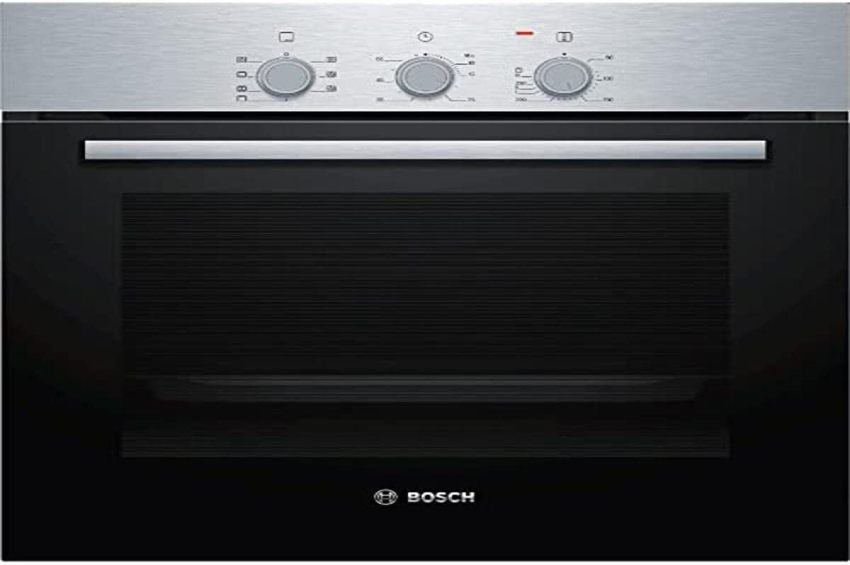
Bosch ovens are prized for their ease of use and versatility. They have also been known to deliver precise and highly consistent results both in cook time and quality.
They have special patented functions such as PerfectRoast and PerfectBake that means you will never have to come across an overcooked roast or a burned pastry ever again. All of the Bosch options come in convection models.
Frigidaire
Frigidaire is a household name in the home appliance niche. They specialize in conventional models and boast of having the lowest number of service calls compared to other brands. They’re sturdy, they look great, and they preheat up to 350 degrees in as fast as 6 minutes.
LG

LG boasts holding the top stop in consumer ratings compared to other brands. They’re versatile and offer top models in both gas and convection electric ovens alike. They come in a lot of different variants and designs but their flagship model is the electric cooker with the smoothtop range.
Kitchenaid
Kitchenaid is a bit of a high end cooker brand but along with its higher price tag comes more user friendly and customizable features. Their ovens usually come with a myriad of preset cooking functions, nonstick interiors, digital displays, and convenient self cleaning options.
Jenn-Air Noir
Jenn-air Noir ovens are the luxury leg of Whirlpool appliances. They are considered as one of the best in the industry. They offer innovative and top notch technology paired along with stellar performance and a smooth and high end design. They’re much more suited for modern and high end kitchens. They are also one of the first brands to bring convection into commercial production.
Miele
Miele is another high-end cooker brand. They’re famous for their seamless and sleek designs as well as for their ovens’ high end technology. They’re currently ranked as one of the most reliable cooker brands in the US market. Miele is a German brand and boasts of surgical and military-like precision in their operating functions.
How Do I Choose an Oven?
There are different types of ovens and there are a lot of different factors you need to consider when choosing a cooker to buy for your home. Here are some things you ought to consider:
Purpose or utility
What are you planning to use your cooker for in the first place? If it’s just for the simple task of making toast or heating up small amounts of food or even baking simple cookies, then perhaps you can just make do with a toaster oven.
If you intend to do something more complex than that, such as roasting meats, baking pastries and the like, then perhaps you need a more advanced type of oven such as a full-sized gas or electric one. Knowing what functions you prioritize can be a main determinant for the kind of cooker that’s more suited for you and for your needs.
Size and kitchen space
You also need to consider what amount of space you have the luxury for in your kitchen. The more space you have, the more capacity you have for a much larger cooker.
If you intend on using your cooker heavily such as for daily meals for the family, then a full sized cooker should serve you better. If you don’t have that much space, on the other hand, perhaps you can make do with a countertop oven.
Convection vs. Conventional
You have to decide on cooker technicalities and use. If you fancy using your cooker for baked treats and the like, then a conventional oven should serve you better as it introduces more moisture into the food and you’re more likely to produce fluffier cakes and pastries.
If you’re more of a meat person and your priority is to come up with browned or crisped meats and other types of food. Then a convection cooker will serve you better as it has accelerated heating and can produce much better sears.
Is a Convection Cooker or Conventional Oven Better?
There’s no straight answer to this as it depends on the majority of foods you’re planning to cook in it. If you’re more into meats and rotisserie, then a convection cooker is faster and more effective when it comes to even heat distribution.
However, if you plan to bake pastries heavily, a conventional cooker is the better choice because it introduces more moisture into the food, which is essential in keeping baked goods soft and fluffy.
Electric Vs Gas Ovens
In terms of efficiency, electric ovens are better. They take less time to preheat and heat, they deliver consistent heat distribution in the food that’s being cooked, and they’re plug and play.
For as long as there’s a socket to connect to, you can operate your electric cooker straight away. And although electricity costs more, there are renewable energy sources now such as solar power that will allow you to operate your electric cooker with less cost. Find more about gas vs electric ovens pros and cons here.
Gas ovens, on the other hand, require a connection to a natural gas line. Although it’s a bit of an inconvenience to set up, natural gas is much cheaper and doesn’t require any special connections or added costs apart from the upfront installation.
For more related content, visit our stove vs oven differences and comparison guide.

